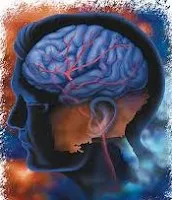Stroke Mortality
Reperfusion in acute ischemic stroke is often not happening quickly enough, a new study confirms. Even in "Get With the Guidelines" stroke hospitals, investigators report that less than a third of patients treated with intravenous tissue plasminogen activator (tPA) had door-to-needle times within the hour recommended by current guidelines.
"It's alarming," Gregg Fonarow, MD, from the University of California at Los Angeles told reporters here yesterday at the International Stroke Conference. "It's time for a targeted national initiative to treat patients more quickly."
During his presentation, Dr. Fonarow pointed out, "When we looked at door-to-needle time modeled as a continuous variable and after adjustment for patient and practice characteristics, we see that for every 15-minute reduction in door-to-needle time, it was associated with a 5% lower odds of in-hospital mortality, and this was highly statistically significant."
Symptomatic intracranial hemorrhage was also less frequent in patients treated within the hour vs those treated later (4.7% vs 5.6%; P < .0017).
The findings were also published online February 10 in Circulation. Investigators studied more than 25,500 patients with ischemic stroke treated within 3 hours of symptom onset. Patients were from the more than 1000 hospitals participating in the guidelines stroke program. The goal of the plan is to help hospitals improve outcomes in stroke. The program's slogan is "time lost is brain lost."
Time lost is brain lost.
Dr. Fonarow reports that door-to-needle time was within the recommended hour in only 27% of patients. The fact that even these hospitals are having trouble meeting the recommendations is calling attention to the problem.
Asked by Medscape Medical News to comment, Robert Adams, MD, director of the Medical University of South Carolina Stroke Center in Charleston, said the difficulty is real. "There can be lots of time losers in the process and we have to start looking at these in a systematic way."
Mark Alberts, MD, from the Northwestern Stroke Center in Chicago, Illinois, agreed the finding is important. However, he cautioned, it may oversimplify a complex issue. "In some cases, a delay may be justified," he pointed out. "The alternative would be no treatment, so a more detailed analysis of appropriate delays versus unjustified or process delays would be important."
The recommendations to date have been consistent. A National Institute of Neurological Disorders and Stroke symposium recommends a door-to-needle target time of 60 minutes. Current American Heart Association and American Stroke Association guidelines also recommend that evaluation and treatment be within the hour of the patient's arrival in the emergency department, and the Brain Attack Coalition's target for primary stroke centers is a door-to-needle time within 60 minutes in 80% or more of patients.
Despite growing evidence, the investigators showed the rate of successful treatment within this time frame only modestly improved over the past 6.5 years — from 19% in 2003 to 29% in 2009. Patients who were younger, male, and white and had no prior stroke were most likely to receive treatment within the hour window.
"It is a concern that older patients, women, and black patients were less likely to receive timely tPA," Dr. Fonarow acknowledged. "It's also notable that the symptom onset-to-arrival times were shorter in patients with door-to-needle times of greater than 60 minutes, suggesting that hospitals were taking a more relaxed approach to the administration of tPA in earlier-arriving patients."
The investigators found hospitals that had greater annual volumes of patients with stroke treated with tPA were more likely to administer therapy quickly. "This suggests that greater hospital team experience translates into improved performance," Dr. Fonarow said.
He says he hopes national programs such as the American Stroke Association Target Initiative will help.
Dr. Adams told I'd like national programs to educate everyone in emergency medical services from dispatch right through. "Any delays right there can ripple through the whole system," he pointed out.
Dr. Adams would also like to see more attention paid to stroke in hospital triage. "We can lose a lot of time with a misdiagnosis like seizure."
Dr. Adams added, "I’d like the American Stroke Association to tell everyone who is 50 or older and anyone else who will listen what the symptoms of stroke are, that there are places that exist for specialized care, and there's a treatment that in many cases is better, faster."
The Get With the Guidelines Stroke program is provided by the American Heart Association and American Stroke Association. It is currently supported in part by a charitable contribution from Bristol-Myers Squibb and Sanofi Pharmaceutical Partnership and the American Heart Association Pharmaceutical Roundtable. The program has been funded in the past by Boehringer-Ingelheim and Merck. Dr. Gregg Fonarow receives research support from the National Institutes of Health. He has received funding from Pfizer, Merck, Schering Plough, Bristol-Myers Squibb, and Sanofi-Aventis. Dr. Fonarow is an employee of the University of California, which holds a patent on retriever devices for stroke.
"It's alarming," Gregg Fonarow, MD, from the University of California at Los Angeles told reporters here yesterday at the International Stroke Conference. "It's time for a targeted national initiative to treat patients more quickly."
During his presentation, Dr. Fonarow pointed out, "When we looked at door-to-needle time modeled as a continuous variable and after adjustment for patient and practice characteristics, we see that for every 15-minute reduction in door-to-needle time, it was associated with a 5% lower odds of in-hospital mortality, and this was highly statistically significant."
Symptomatic intracranial hemorrhage was also less frequent in patients treated within the hour vs those treated later (4.7% vs 5.6%; P < .0017).
The findings were also published online February 10 in Circulation. Investigators studied more than 25,500 patients with ischemic stroke treated within 3 hours of symptom onset. Patients were from the more than 1000 hospitals participating in the guidelines stroke program. The goal of the plan is to help hospitals improve outcomes in stroke. The program's slogan is "time lost is brain lost."
Time lost is brain lost.
Dr. Fonarow reports that door-to-needle time was within the recommended hour in only 27% of patients. The fact that even these hospitals are having trouble meeting the recommendations is calling attention to the problem.
Asked by Medscape Medical News to comment, Robert Adams, MD, director of the Medical University of South Carolina Stroke Center in Charleston, said the difficulty is real. "There can be lots of time losers in the process and we have to start looking at these in a systematic way."
Mark Alberts, MD, from the Northwestern Stroke Center in Chicago, Illinois, agreed the finding is important. However, he cautioned, it may oversimplify a complex issue. "In some cases, a delay may be justified," he pointed out. "The alternative would be no treatment, so a more detailed analysis of appropriate delays versus unjustified or process delays would be important."
The recommendations to date have been consistent. A National Institute of Neurological Disorders and Stroke symposium recommends a door-to-needle target time of 60 minutes. Current American Heart Association and American Stroke Association guidelines also recommend that evaluation and treatment be within the hour of the patient's arrival in the emergency department, and the Brain Attack Coalition's target for primary stroke centers is a door-to-needle time within 60 minutes in 80% or more of patients.
Despite growing evidence, the investigators showed the rate of successful treatment within this time frame only modestly improved over the past 6.5 years — from 19% in 2003 to 29% in 2009. Patients who were younger, male, and white and had no prior stroke were most likely to receive treatment within the hour window.
"It is a concern that older patients, women, and black patients were less likely to receive timely tPA," Dr. Fonarow acknowledged. "It's also notable that the symptom onset-to-arrival times were shorter in patients with door-to-needle times of greater than 60 minutes, suggesting that hospitals were taking a more relaxed approach to the administration of tPA in earlier-arriving patients."
The investigators found hospitals that had greater annual volumes of patients with stroke treated with tPA were more likely to administer therapy quickly. "This suggests that greater hospital team experience translates into improved performance," Dr. Fonarow said.
He says he hopes national programs such as the American Stroke Association Target Initiative will help.
Dr. Adams told I'd like national programs to educate everyone in emergency medical services from dispatch right through. "Any delays right there can ripple through the whole system," he pointed out.
Dr. Adams would also like to see more attention paid to stroke in hospital triage. "We can lose a lot of time with a misdiagnosis like seizure."
Dr. Adams added, "I’d like the American Stroke Association to tell everyone who is 50 or older and anyone else who will listen what the symptoms of stroke are, that there are places that exist for specialized care, and there's a treatment that in many cases is better, faster."
The Get With the Guidelines Stroke program is provided by the American Heart Association and American Stroke Association. It is currently supported in part by a charitable contribution from Bristol-Myers Squibb and Sanofi Pharmaceutical Partnership and the American Heart Association Pharmaceutical Roundtable. The program has been funded in the past by Boehringer-Ingelheim and Merck. Dr. Gregg Fonarow receives research support from the National Institutes of Health. He has received funding from Pfizer, Merck, Schering Plough, Bristol-Myers Squibb, and Sanofi-Aventis. Dr. Fonarow is an employee of the University of California, which holds a patent on retriever devices for stroke.




Comments
Post a Comment